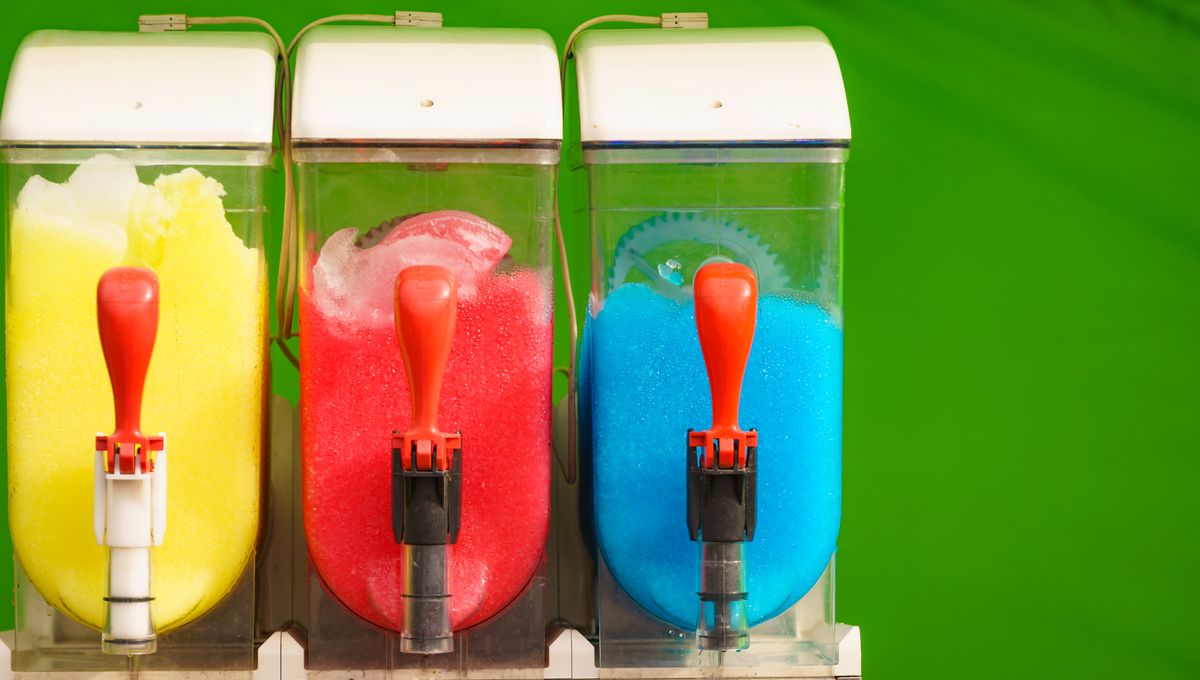
They might seem like a harmless, nostalgic summer treat, but a little-known ingredient in some frozen slushies can pose a serious health risk for some kids. In a new study, experts review 21 cases of children who became unwell after consuming these products and ask whether the time is right to update public health guidance, to ensure parents are informed about the risks.
The trouble with glycerol
ADVERTISEMENT
The ingredient in question is glycerol. It’s commonly found in the “no-added-sugar” or “sugar-free” versions of slushies that are widely available in the UK and Ireland, where the research team are based. The reason it’s added is to help keep that characteristic slush texture in the absence of added sugar. It may also appear on labels as glycerine or food additive E422.
For most adults and older children, occasional consumption of the levels of glycerol in these products will not cause a problem. But for younger kids, there’s a risk of a potentially serious illness called glycerol intoxication syndrome.
The authors say their study is the first to take a close look at this syndrome across a series of children, all of whom received medical treatment between 2009 and 2024 after ingesting a slushy.
The median age of these children was 3 years and 6 months, with 38 percent of them aged 4 and under. This age group is known to be at particular risk of glycerol intoxication syndrome as the effects are associated with body weight – sometimes, the amount of glycerol in a slushy can be too much for a little kid’s body to handle, especially when consumed quickly or in excess.
“Food Standards Scotland and the FSAI [Food Safety Authority of Ireland] suggested that 125 milligrams per kilogram of body weight per hour is the lowest dose that is associated with negative health effects. For a toddler this may equate to 50–220 milliliters of a slush ice drink. The standard size drink sold in the UK and Ireland is 500 milliliters [about 17 ounces],” the authors write.
What can happen to kids when they consume glycerol?
One of the key features of this condition is how quickly it can present – of the 15 kids for whom this information was available, 14 of them became unwell within 1 hour of consuming the drink.
ADVERTISEMENT
There are three main clinical features that, together with a history of recent slushy consumption, can lead a doctor to a diagnosis of glycerol intoxication: reduced consciousness, a sudden drop in blood sugar (hypoglycemia), and acid buildup in the blood (metabolic acidosis).
Of the 21 children in the study, 20 had documented hypoglycemia, some severe. Of the 17 children for whom this data was available, 16 had metabolic acidosis. One of the children had a seizure, and four underwent urgent neuroimaging.
Thankfully, all 21 children recovered quickly after their blood sugar was stabilized. They were advised to steer clear of slushies in the future; one child did consume another of the drinks at the age of 7 and once again developed rapid hypoglycemia, resulting in an ambulance being called.
While the study period covered 2009-2024, most of the cases were from 2018-2024, indicating a recent increase. The researchers suggest this could coincide both with increasing parental concern around sugar intake, prompting parents to select sugar-free alternatives more frequently, as well government taxation on high-sugar products in the UK and Ireland.
ADVERTISEMENT
They also note that in regions without such levies, slushies are generally higher in sugar and may contain no glycerol at all.
What does the study recommend?
It’s not the first time that cases of glycerol intoxication syndrome have hit the headlines, and both the UK and Irish food regulators did take action. In 2023, the UK Food Standards Agency recommended that the drinks not be given to kids under 4, and that free refill promotions should not be offered to kids under 10. In 2024, the FSAI also said kids under 4 should not be given the drinks, and that 5-10-year-olds should stick to one per day.
However, the study authors suggest it might be time for an even stricter stance.
“There is poor transparency around slush ice drink glycerol concentration; estimating a safe dose is therefore not easy,” they write.
ADVERTISEMENT
“To ensure safe population-level recommendations can be easily interpreted at the individual parental level, and given the variability across an age cohort of weight, we suggest that recommendations should be based on weight rather than age. Alternatively, the recommended age threshold may need to be higher (8 years), to ensure the dose per weight would not be exceeded given normal population variation in weight.”
Enjoying a slushy at the movies or the fair is a core childhood memory for many of us; however, it’s important that parents understand how the ingredients of these products may have changed over time and pay attention to these recommendations to avoid a potentially scary health situation.
The study is published in the journal Archives of Disease in Childhood.
The content of this article is not intended to be a substitute for professional medical advice, diagnosis, or treatment. Always seek the advice of qualified health providers with questions you may have regarding medical conditions.
Source Link: Slushy Drinks May Contain An Ingredient That Can Make Kids Really Sick